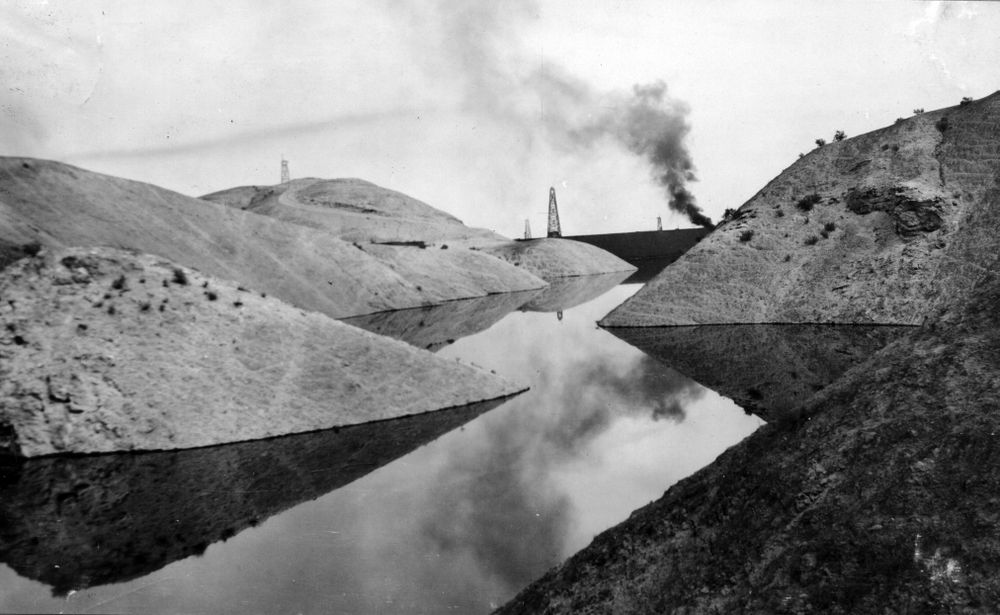Despite the romanticism, gushers were extremely dangerous and wasteful.
They have killed workmen, destroyed equipment, and coated the landscape with millions of barrels of oil.
The destruction to wildlife and to the environment is catastrophic.

The Lakeview Gusher reflected in a pool of oil spill.
One of historys largest oil spills was the result of a blowout.
Midway-Sunset is one of the largest oil reserves in the United States.

Within this area, there are nearly two dozen separate oil reservoirs at varying depths.
It was only through a partnership with the Union Oil Company, that drilling was resumed.
Oil from the Lakeview Gusher accumulating in a pool.

Rivers of oil from the Lakeview Gusher.
For fourteen months, the company drilled, but fortune still eluded them.
Charlie was not a bad driller; but he was always assigned to drill poor prospects.

But this time, Charlies luck was going to change.
In the initial days, the flow was estimated to around 125,000 barrels a day.
Even after thirty days, the flow was still 90,000 barrels a day.

To stop the crude oil from contaminating the lake, workers built berms with sandbags.
They also dug catch basins where the crude oil could accumulate.
A worker poses in front of the runaway oil well.

Two men raft on a pool of oil.
From the tanks, an eight-inch line carried the oil to Port Avila on the California coast.
But the gushers blew the box to smithereens.

It became a national news and tourists came from all around California to see it.
A special train ran everyday bringing gawkers to the oil field.
On windy days, these onlookers often got drenched in a mist of oil.

Crew construct a wooden box to plug the oil mouth.
The moment the wooden box was blown away.
It took 18 months to bring the gusher under control.

The pool inside the dike was finally deep enough to reduce the gusher to a gurgling spout.
Eventually, the bottom of the hole caved in on September 10, 1911, and the well died.
During the 544 days it flowed, the well produced 9.4 million barrels of oil.

Less than half was this oil was saved.
The rest evaporated off or seeped back into the ground.
The Lakeview Gusher in its dying stages.

The Lakeview Gusher is surrounded by an embankment of sandbanks.
Traces of this remarkable event can still be found in this region.
There are also traces of the sandbag berm used to surround the well.
The site is also marked by a historical marker and a bronze plaque.
Oil Strata from the 1910 Lakeview Gusher, taken almost a hundred years after the event.
Photo:Antandrus/Wikimedia Commons
The historical marker at the site of the Lakeview Gusher.